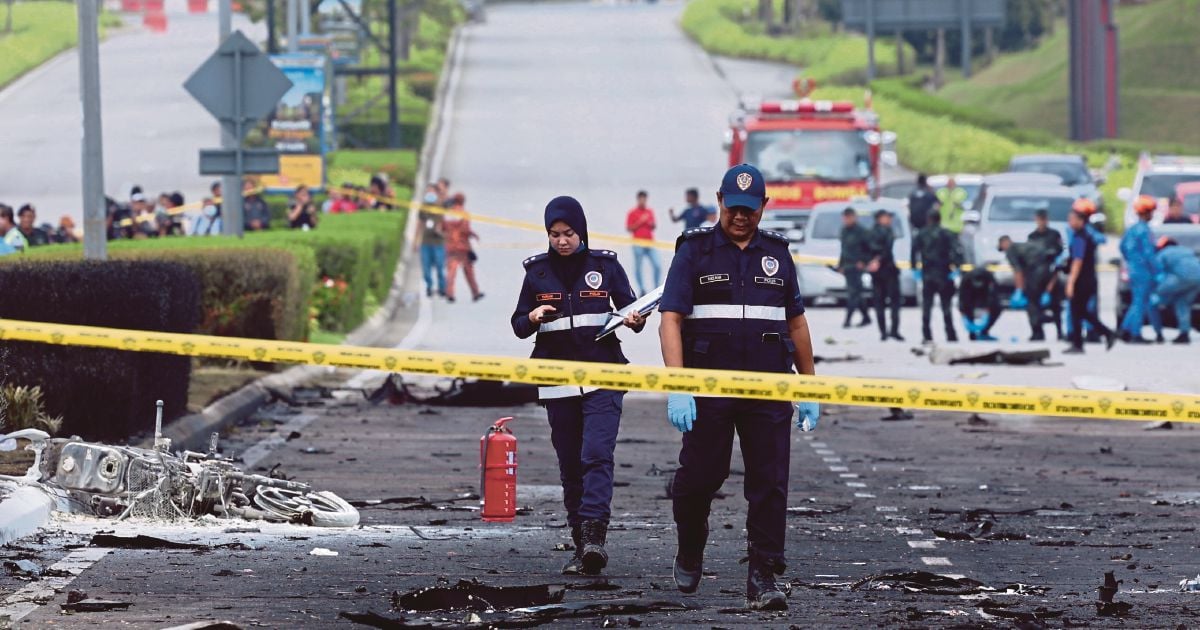KUALA LUMPUR: The Civil Aviation Authority of Malaysia (CAAM) recorded 75 high-risk aviation incidents in 2022 and 2023.
The authority’s chief executive officer, Datuk Captain Norazman Mahmud, said these incidents involved loss of control in flights, near mid-air collisions, controlled flights into terrain, and runway excursions and incursions.
While the number of incidents is within a “manageable” range, Norazman said CAAM was on a mission to foster a more rigorous culture of safety in the aviation sector to reduce the number of accidents and high-risk incidents.
CAAM is doing this through a Safety Performance Index (SPI).
“The SPI works like a Key Performance Indicator,” he told the New Sunday Times in an exclusive interview.
“When the number of accidents and incidents brings us close to exceeding a certain number, it means that we need to start taking additional measures.
“Every state will have a target, calculated based on 10,000 flights,” he said, adding that the national average of accidents and incidents was 1.11 per cent per 10,000 flights.
This is despite spikes in the incident rate for some months last year: June (2.13), April (1.77) and August (1.68).
The safety performance target for 2023 was set at 1.05, a five per cent improvement over the average rate of the preceding year.
Norazman said it was an uphill battle to educate and foster a safety culture in the aviation industry, even though CAAM’s safety requirements were based on International Civil Aviation Organisation (ICAO) standards.
Requirements differ between air operators, with commercial airlines facing more stringent regulations compared with general aviation, which flies less frequently and involves fewer passengers.
General aviation includes private planes, corporate jets, charter flights, training flights, recreational flying, and aerial work.
“If you read our regulations, there are numerous publications that you need to adhere to, to stay within the safety parameters.
“However, monitoring them is a challenge, so we need them to adopt a safety-first mindset and do the right thing even when we are not watching.”
He said CAAM’s purview covered only civil aircraft, or those bearing 9M registration codes.
State-owned aircraft like military helicopters and planes have M registration codes. Accidents and incidents involving state-owned aircraft are investigated by the authority to which the aircraft belongs.
Norazman said operators of civil aircraft who faced difficulties in meeting the regulations should seek CAAM’s assistance.
“There are alternate means of compliance. There is always a way for you to meet certain regulations.
“The minute you exceed any parameters, accidents or incidents can happen.”
He said among the often overlooked regulations were maintenance record-keeping and risk assessments.
While air accident and incident investigations fall under the Air Accident Investigation Bureau’s (AAIB) jurisdiction, Norazman said CAAM conducts internal investigations to improve safety measures.
“AAIB has its timeline for publishing investigation reports: a preliminary reports come out a month after the incident, and final reports within a year.
“However, there are times when we cannot wait a year, so we conduct our investigations, such as in the case of the helicopter incident in Taman Melawati in December 2020.
“We halted in-company flights because it was risky,” he said, adding AAIB’s final report validated their decision.
© New Straits Times Press (M) Bhd

